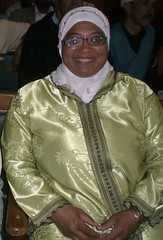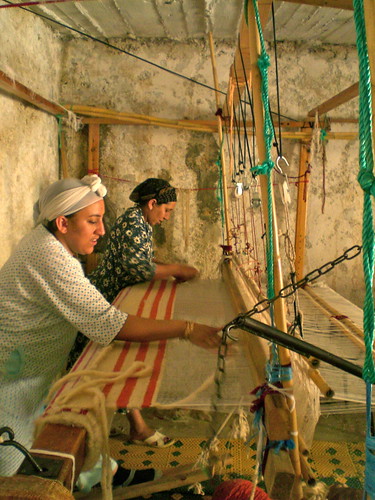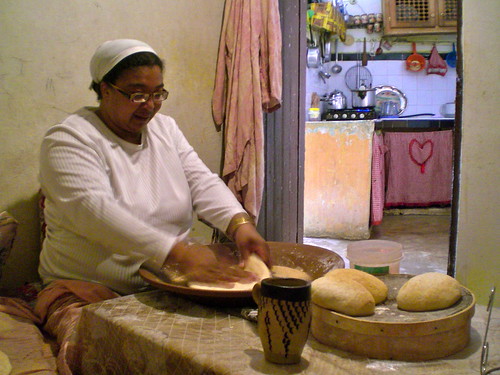First lesson after a week in Ain Leuh: Nihna ma Ndai3uush el waqt
After the long ride from Rabat to Meknes by train, I had to take taxi 1 to Meknes taxi station, taxi 2 to Azrou and finally taxi 3 to Ain Leuh. In Ain Leuh the green storefront sign of the Cooperative was very familiar and welcoming to me, I had seen it in multiple pictures and I used it to produce my first video. The sight of this sign gave me a sense of relief. Finally Ain Leuh! I was truly exhausted.
The only woman in the room who I surprised by my sudden appearance did not take away my feeling of relief. She welcomed me with a curious but very warm smile. To her surprise I spoke with her in fluent Arabic dialect that she only hears on Tv when watching the popular Syrian drama series. She obviously did not expect The Advocacy Project’s fellow to be an Arab. The woman was an elderly woman in her 50s, tall and thin but very strong. She helped me carry my heavy suitcase down the long stairs of Ain Leuh to the second floor of the Cooperative where Khadijah (called Khadouj) the woman in command in the Cooperative, was spinning the wool for the other weavers. In this room there were multiple looms and two women (Khadija and Saadiyya) working behind a loom on a beautiful blanket.
I was warmly welcomed and almost at once taken down to Khadouj’s house where I will spend my next 10 weeks. Khadouj, with her warm smile and cheerful way of talking, was very hospitable. Throughout the first week, I could not help but admiring her strong will, firm determination and high spirit. I have already learned about Khadouj from my predecessor Laura mcAdam’s blogbut witnessing her daily struggle to do her job exceeds every word.
Next day I went with Khadouj to the Cooperative. The place consists of three floors; the upper floor, which also has the same level as the street, is the place where large carpets are woven. The middle floor serve as exhibition room for finished products and a place where small rugs and other small items are woven. The lower floor is where scarfs, bed blankets and bed covers are made.
At first, it seemed to me illogic to make the middle floor, which is not visible by street passers, the exhibition room for the Cooperative. Upon asking about that, I learned that during Ain Leuh’s hard winter, the cooperative ceiling leaks rain water and the work of long months gets destroyed either by the rain or by the humidity.
The work in the Cooperative is organized around products and the working day is divided into two periods. In the morning all women work on large and complex carpets. These carpets need a lot of concentration and patience because their motifs are complicated and involve multiple colors. Any late discovered mistake, as one of the ladies explained to me, means the undo of multiple lines before reaching the mistaken line. At noon, each woman goes back home to prepare lunch for her family. Around 2:30 almost everybody is behind her loom in the Cooperative to continue work on smaller items, such as blankets, bed sheets, scarf and small cushions.
Fridays are the only days when women could sleep in, do their laundry, thoroughly clean their houses and have sufficient time to bake bread and prepare Moroccan traditional dish: Couscous. During this week, I heard the following sentence again, and again and again. It is Khadija’s favorite sentence: NIHNA MA NDAI3UUSH EL WAQT; We do not waste the time!
Posted By Benan Grams
Posted Jun 12th, 2013




